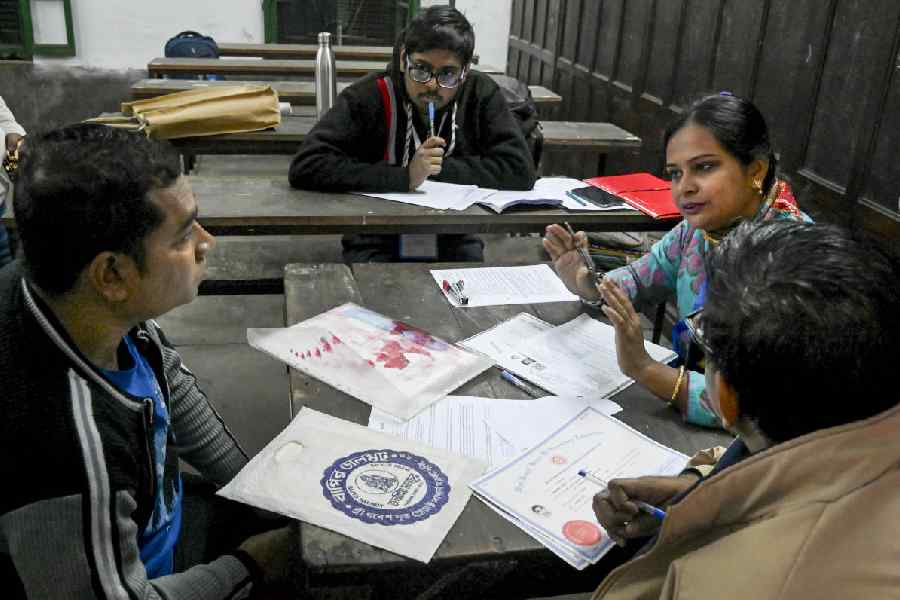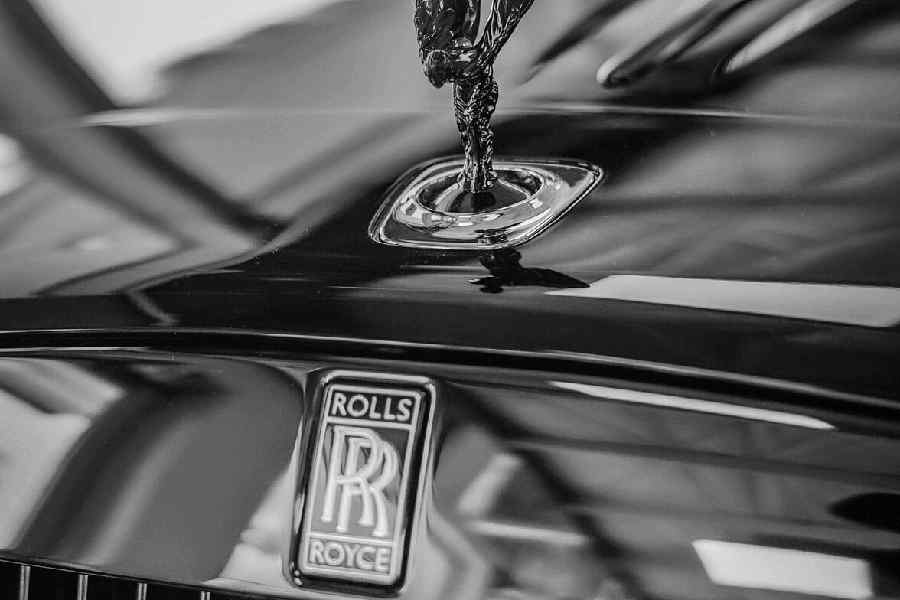 |
| Anita Sengupta with the full-sized model of the EDL sequence parachute in the background |
Aug. 5: A parachute tested by aerospace engineer Anita Sengupta is among critical mission elements that will determine the fate of a US spacecraft on Monday morning as it attempts to safely deposit a robotic rover at the foot of a mountain on Mars.
The American engineer, whose father is Bengali and mother British, is a member of the entry, descent, and landing (EDL) sequence team tasked with slowing down the spacecraft to enable a soft landing on the Martian surface.
The $1.8 billion Mars Science Laboratory spacecraft ferrying the rover named Curiosity is expected to enter the Martian atmosphere at 10.31pm Sunday night in California, 11.01am Monday morning in India. Curiosity’s landing site lies in a region called the Gale Crater which scientists believe could once have had pools of water and may hold clues about the past or present habitability of Mars.
The parachute that Sengupta helped analyse and test is expected to open up and slow down the spacecraft from supersonic to subsonic speeds, and prepare it for a powered descent phase on eight retro-rockets.
“We’re excited, nervous, emotional, happy. It’s the culmination of our blood, sweat, and tears over the past seven years,” Sengupta told The Telegraph in a telephone interview today. “We’ve done everything we could from an engineering perspective ... but there are things that are always out of your control.”
Sengupta, who was born in the UK, arrived in the US with her parents when she was three, and grew up in New York, says she first imagined herself in a career in space exploration when she was six, inspired by science fiction, including episodes of Star Trek.
“I chose the engineering route for space exploration, rather than the science route,” said Sengupta, an EDL engineer at the National Aeronautics and Space Administration’s Jet Propulsion Laboratory (JPL) in Pasadena, southern California.
For more than three years before Nasa launched the Curiosity mission last November, Sengupta had conducted simulations of the 21.5 metre diameter parachute designed to reduce the speed of the spacecraft from about 1600kmph to about 400kmph. “We’ve tried to understand exactly how the parachute will behave in the Martian atmosphere,” said Sengupta.
The 899kg Curiosity is the heaviest rover scientists have ever tried to land on Mars — and the parachute to slow its descent has been described by Nasa engineers as the largest extraterrestrial aerodynamic decelerator in history.
The mobile laboratory carries an array of cameras and 10 scientific instruments that will allow it to collect, store, and analyse samples of material up to five-centimetres below the surface of rock and soil. Nasa-JPL scientists say Curiosity’s primary assignment during its two-year life is to assess whether the terrain that it explores has ever had environmental conditions favourable for Martian microbial life.
“We’re trying to land in a scientifically fascinating site,” Sengupta said. “But the needed accuracy at the landing site, the proximity to a mountain, and the size of the rover pose several engineering challenges,” she said.
Previous remote observations have suggested that some areas near Curiosity’s landing site appear to contain clay minerals and layers of sulfate salts. Nasa-JPL researchers point out that both clays and sulfate environments are formed in wet environments.
The clays and sulfate rich deposits that Curiosity is expected to investigate are good at latching on to organic chemicals — possible signatures of microbial life — and protecting them from degradation, according to a document on the mission from Nasa-JPL.
“We have a great landing site that was a strong contender for earlier (Mars) missions, but was not permitted, because no earlier landing could be targeted precisely enough to hit a safe area inside the Gale crater,” John Grotzinger, a scientist with the Curiosity mission at the California Institute of Technology, said earlier this week in a media release issued by Nasa-JPL.
Mission engineers, specifically the EDL sequence team members, have designed what is called a “sky-crane manoeuvre,” to lower Curiosity through a tether of nylon cords from a spacecraft hovering over the surface with the help of eight retro rockets.
(After the parachute slows down the spacecraft, the heat shield that protected it during the near-1800 degrees Celsius temperatures during atmospheric entry will be ejected, and the retro rockets will be activated to gently lower Curiosity via tether to the surface.)
“We’ve done everything we could to design and test the multiple elements of the (EDL) system, but the flight to Mars is the first time they can be tested together in a Martian-like environment,” said Sengupta, who obtained a PhD in aerospace engineering from the University of Southern California, where she now teaches students spacecraft design.
“The development of interplanetary spacecraft and landing systems, and exploring other planets is among the toughest things you can do as an engineer,” she said. “And the thrill is in the challenge and the journey.”
Sengupta will analyse the EDL sequence performance, but is already involved to other projects too — a mission to Europa, a Human-Earth return capsule, and an instrument for the International Space Station.











